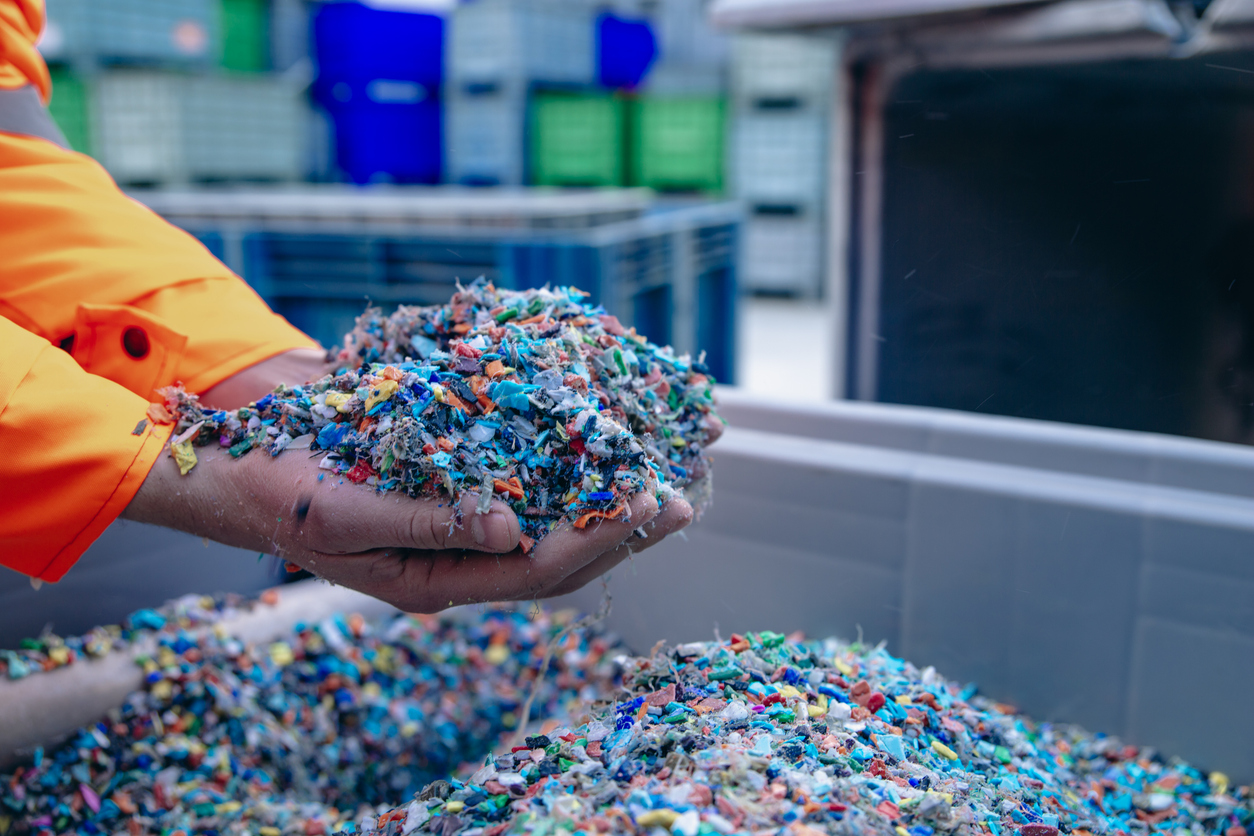Develop Sustainable Products to Reduce Environmental Footprint
Sustainable products are increasingly more important to customers and our environment. It’s not enough to simply have one aspect of your supply chain be working towards environmental sustainability, rather the entire process of creating a product–from ideation to finished good–must have sustainable practices installed.
What is a Sustainable Product?
A sustainable product is a product that uses resources efficiently and responsibly, minimizes environmental and social impacts, and is economically viable throughout its life cycle. It’s not simply just the materials, though they do play a role in a product’s sustainability. Rather, every step of the manufacturing process has an impact; from sourcing materials, the labor that goes into creating a product, product distribution, usage and disposal, and finally the end-of-life plan.
Examples of Sustainable Products
Some examples of sustainable products include clothing made from natural materials such as cotton or bamboo, electronics made with recycled metals, and fair trade sourced materials to name a few. It has been proven that customers prefer to purchase products like these that are conscious of their production and are actively trying to reduce their carbon footprint.
One company that has made it their mission to directly address sustainability is Bright Future Foods, a subsidiary of Post Holdings and known for their Airly line of snacks. Bright Future Foods has a simple yet impactful mission: to reverse climate change through food. They saw that 25% of greenhouse gasses can be traced back to the food industry. Thus, with their products they focus on carbon-negative farming and other carbon offset projects that don’t leave a footprint.
What is Sustainable Product Development?
While creating and consuming sustainable products seems great, how do you actually produce these products? First, it comes with understanding what sustainable product development entails.
Product design and engineering teams have immense power over this sector, as they influence whether certain materials are going to be used, what the end-of-life of the product is going to look like, and what to do with the waste produced from making a product.
Sustainable product development includes, but is not limited to, choosing organic and recyclable materials, sustainability strategy assessments and audits, using energy efficient or renewable production methods, and using sustainable packaging. All these aspects are important to keep in mind when creating products. Each item, even if it seems unimportant, has a big impact on the overall success of a sustainable product.
Benefits of Sustainable Product Development
Sustainable product development has many benefits that are not only beneficial for the environment but positively impact your business too. Everything affects the other. While you may feel the burden of needing to implement these sustainable methods, it will boost your bottom line in the long run, preventing you from falling subject to sustainability non-compliance fees, constant overhead costs of net new materials, and high customer morale and loyalty.
Some benefits of sustainable product development include:
- Reduce carbon footprint and greenhouse gas emissions
- Carbon emissions have skyrocketed in the 20th and 21st century. Especially with our current explosion of SKUs, this issue will not improve unless we do something about it. By implementing sustainable product development, your company can change their narrative from being part of the problem to part of the solution.
- Reduce waste
- Sustainable products reduce waste in a couple of ways. Most obviously, it keeps non-compostable products out of landfills. Many traditional products can not easily break down. Thus, they sit and produce greenhouse gasses that are harmful to the environment. By using organic or reusable materials, this reality is lessened. Another way sustainable products reduce waste is during production. There are normally excess materials when products are being made. Rather than those scraps becoming waste, sustainable workflows will reuse that material in some way, benefiting the company and the environment.
- Cost savings through efficient material and energy use and conservation of natural resources
- Oftentimes, sustainable products require fewer raw materials and energy resources than traditional products, as they can easily be broken down to create a new product, with the same high-quality results. Efficient energy use is also a huge cost saver for the company. The less effort it takes to form a product, the better. These points not only save money but are good for the environment.
- New market and customer segment access
- Eco-friendly products are attractive to customers. They feel as if they are helping the environment by supporting businesses that prioritize sustainable production. There is a large segment of consumers who desire to shop sustainably. This can be an untapped market for some companies, creating a brand-new market segment that boosts company revenue.
- Enhanced brand reputation
- Though sustainable products can help a company break into a new market, they also retain customer loyalty and make your company more attractive to consumers. Consumers appreciate being well-informed about their purchases. Thus, being very transparent about your sustainability initiatives is always an added bonus.
- Regulatory compliance
- The implementation of sustainable practices in product development has an added benefit when it comes to regulatory compliance. Sustainability EPR laws are constantly being implemented, making it more necessary for brands to keep up with sustainability efforts. With 139 EPR laws and counting, it is not a matter of if, but when sustainability laws are going to affect your business. Creating sustainable products now will save time, energy, and resources in the future.
Sustainable Product Development Process
While the benefits of sustainable product development sound great, how are these new workflows and ideas tangibly possible to implement? It can be difficult to switch to sustainable product development methods that take immense planning and environmental studies. However, you can start by implementing sustainable product development into your existing process management and company goals.
Here is a step-by-step guide on how to get started and how sustainability can be implemented into every step of a product’s life cycle.
- Research and Planning
- It is crucial to have a game plan that everyone involved is on board with before you roll out new workflows. You are always going to need an answer to why you are implementing change.
Thus, it is important to start with sustainability assessments and audits. By understanding your baseline, you can clearly identify where you are excelling and where you can better your business, especially when it comes to sustainability. Having a solid grasp of your data is helpful during this step, as you can only analyze and audit the current data that you have.
Once you have done your assessments and audits, it is time to set sustainability goals and benchmarks. It cannot be stressed enough that the entire company needs to be aligned on sustainable business goals . Sustainability is not a siloed effort, rather something that everyone’s role plays a part in.
- It is crucial to have a game plan that everyone involved is on board with before you roll out new workflows. You are always going to need an answer to why you are implementing change.
- Sustainable Product Design Process and Material Selection
- If possible, it is ideal to choose eco-friendly and recyclable materials when creating new products. While this is not always feasible to do on a large scale, there are also smaller ways to make an impact. For example, rather than completely getting rid of all plastics in a design, using recycled plastics rather than net new can be a great direction to go.
It is also important to incorporate disassembly and recyclability into a design. Focusing on the end-of-life of a product is just as important as the initial production. Thinking through the use case and collection of the product is critical.
- Manufacturing
- Understandably so, a large piece of sustainable development involves the manufacturing process. Once your company has strategized and determined which materials to use, the next piece to a sustainable model is to implement energy-efficient and low-waste production methods. Manufacturing accounts for 74% of total industrial energy consumption which is an extremely significant number. Additionally, when looking at the overall goals set in place by the government, energy must be transformed in less than 30 years. Laws such as the U.S. government’s goal for net zero emissions by 2050 are an added push to adopt sustainable energy alternatives.
One way to attack this major up taking is by utilizing renewable energy sources such as solar, wind power, hydroelectric, tidal, biomass, and geothermal methods. With laws in place to reduce burning fossil fuels, renewable energy has become a must. These methods allow customers to meet their environmental impact goals as well as comply with consumer demands.
- Packaging and Product Distribution
- The next step in the production process is packaging and product distribution. Sustainability within the packaging industry has been a vast topic of discussion in the past couple of years. Designing sustainable packaging solutions has become a necessity. It isn’t just a buzzword term anymore. Some possible ways to address sustainable packaging is through light-weighting your packaging, using recyclable materials, and designing packaging that has multi-usage, such as incorporating self-adhering closures or packaging that doubles as a container.
By implementing these sustainable packaging methods, it inherently impacts the distribution of these products. Lightweight packaging and pallet optimization requires less energy to move products, decreases your carbon footprint by reducing greenhouse gas emissions, and ultimately lowers costs and increases profitability for product manufacturers.
- The next step in the production process is packaging and product distribution. Sustainability within the packaging industry has been a vast topic of discussion in the past couple of years. Designing sustainable packaging solutions has become a necessity. It isn’t just a buzzword term anymore. Some possible ways to address sustainable packaging is through light-weighting your packaging, using recyclable materials, and designing packaging that has multi-usage, such as incorporating self-adhering closures or packaging that doubles as a container.
- Product End-of-Life Management
- Finally, a product’s lifecycle management is crucial to have a grasp on, especially when it comes to your product’s end-of-life, as well as the recycling of old products. This plan typically includes monitoring the end-of-life status for products as well as looking into what will happen to it when it is discarded. Ideally, it is best to encourage and enable product recycling and take-back programs. This is only possible if the rest of the development process accounted for this and designed the product to be recyclable and/or reusable.
How Sustainable Product Development Enables a Circular Economy
Sustainable product development and circular economy go hand in hand. A circular economy model is simply a method of production and consumption where the materials are kept in circulation for as long as possible. The goal of a circular economy model is for materials to never become waste. Rather, they are either reused or regenerating nature. This model attempts to address climate change, waste, pollution, and biodiversity loss by giving back to our environment through sustainable product development. Plus, it extends the life cycle of products.
In order to create sustainable products, they must give back to the environment in some shape or form. Whether it’s through renewable energy, recyclable materials that can be composted, lightweight packaging, or extending the life cycle of a product by making it reusable. It is nearly impossible to have a circular economy without sustainable products being developed.
How Specright Enables Sustainable Product Development
There is a lot to take in when it comes to creating sustainable products. Since every step of the production process is affected, it is crucial to understand your business and your specific business unit like the back of your hand. The best way to gain this knowledge is through your data.
Specright is an essential tool in this process, as it helps you accelerate speed to market by managing all your data, materials, suppliers, and tasks in one system. Specright is committed to creating and managing sustainable product development, giving customers tangible tools to reach these goals.
With specification and product data typically housed in static systems such as emails, spreadsheets, legacy systems, and shared drives, many companies face a lack of visibility and accessibility to the realities of their business. Specright’s Specification Data Management platform enables companies to link all of their data together to form one cohesive story.
With modules specific to product lifecycle management and new product development, as well as sustainability, Specright is designed to aid sustainable product development. In Specright, customers can view every detail of a product, track a product’s status and version history, compare specifications to confidently know what will help meet goals, and brands and suppliers can store all relevant documentation in one place.
Specright also has extremely helpful partnerships and integrations that advance sustainability efforts. One of these partnerships is with Lorax EPI, an industry leader in EPR reporting, that allows customers to easily track sustainability compliance. Along with EPR reporting, Specright also provides the tools to create Life Cycle Assessments (LCAs) with the click of a button thanks to an integration with Trayak’s COMPASS. This allows customers to use their data to gain insights into their environmental impact through LCAs and further meet their sustainability goals.
By understanding all of this data, companies can easily pinpoint areas that can be improved upon, such as minimizing the amount of PET in a plastic bottle or subbing out styrofoam for paperboard in their packaging. The opportunities are endless, as Specright is the one-stop-shop for all things product development.
Conclusion
Though sustainable product development can be a long process, there are immense benefits to it, such as cost-savings, positive environmental impacts, and an increased brand reputation. Starting this journey in sustainable product development doesn’t have to be overwhelming, especially when there are resources like Specright to help manage the complexities of a product’s lifecycle, sustainability regulations, and reporting.
To learn more about the importance of sustainability when creating new products, check out Specright’s sustainability report. If you’re ready to jump into your own sustainable product development journey, request a demo of Specright and we can help you get started.
Explore More Blogs
Get Started
With Specright’s Solution Suite, you can digitize, centralize, and link your specification data to drive efficiencies, intelligence, traceability, and collaboration within your organization and across your supply chain network.




